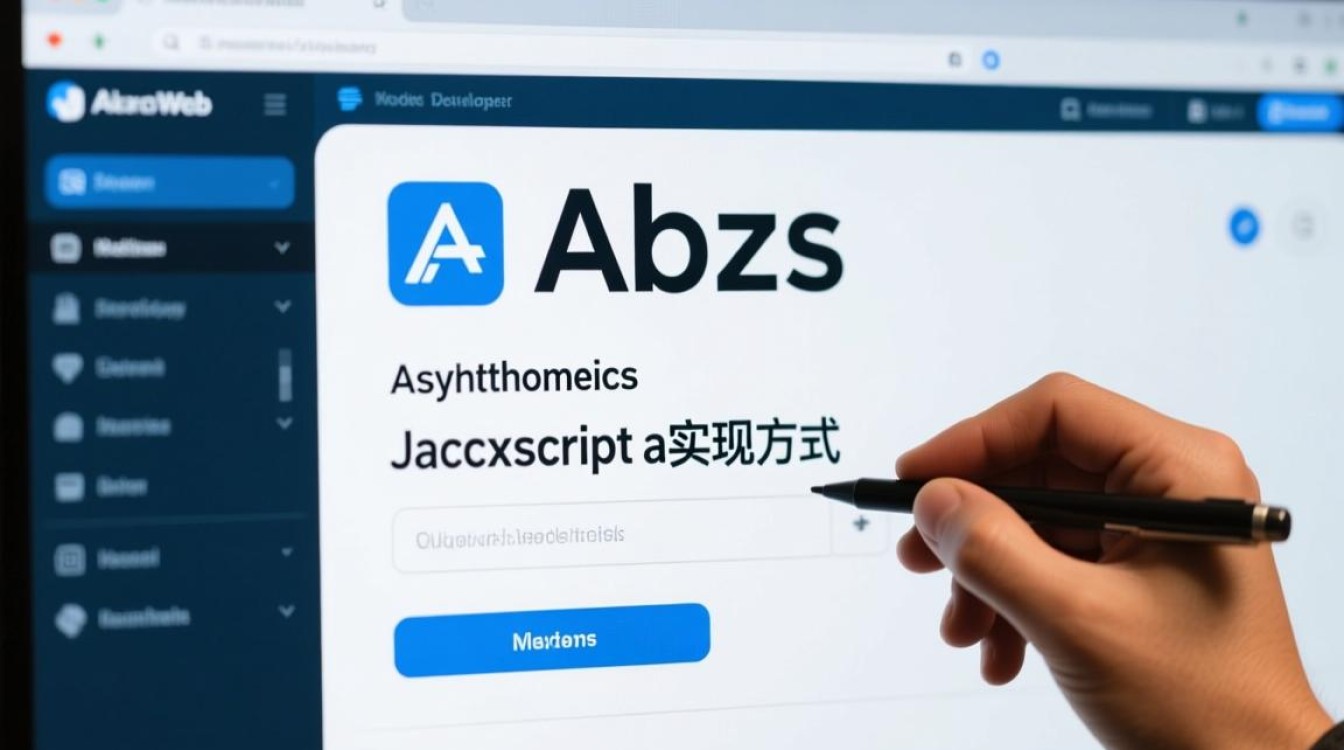Java环境下Ajax请求的实现方式
在现代Web开发中,Ajax(Asynchronous JavaScript and XML)技术能够实现页面无刷新数据交互,极大提升用户体验,Java作为后端主流开发语言,常与前端配合通过Ajax完成数据请求,本文将详细介绍Java环境下Ajax请求的编写方法,包括原生JavaScript实现、jQuery封装以及Spring Boot后端处理。

原生JavaScript实现Ajax请求
原生JavaScript是最基础的Ajax实现方式,无需依赖第三方库,适合轻量级需求,核心是使用XMLHttpRequest对象发起异步请求,以下是一个GET请求示例:
var xhr = new XMLHttpRequest();
xhr.open("GET", "http://example.com/api/data?param1=value1", true);
xhr.onreadystatechange = function() {
if (xhr.readyState === 4 && xhr.status === 200) {
var response = JSON.parse(xhr.responseText);
console.log("响应数据:", response);
}
};
xhr.send();
POST请求需设置请求头并传递数据:
xhr.open("POST", "http://example.com/api/save", true);
xhr.setRequestHeader("Content-Type", "application/json");
var data = {name: "张三", age: 25};
xhr.send(JSON.stringify(data));
使用jQuery简化Ajax操作
jQuery封装了Ajax方法,语法更简洁,兼容性更好,以GET请求为例:
$.ajax({
url: "http://example.com/api/data",
type: "GET",
data: {param1: "value1"},
dataType: "json",
success: function(response) {
console.log("响应数据:", response);
},
error: function(xhr, status, error) {
console.error("请求失败:", error);
}
});
POST请求只需修改type和data参数:

$.ajax({
url: "http://example.com/api/save",
type: "POST",
contentType: "application/json",
data: JSON.stringify({name: "李四", age: 30}),
success: function(response) {
alert("保存成功!");
}
});
Java后端处理Ajax请求
后端需根据请求类型返回JSON数据,以Spring Boot为例,可通过@RestController注解实现接口:
-
GET请求处理
@RestController @RequestMapping("/api") public class DataController { @GetMapping("/data") public ResponseEntity<Map<String, Object>> getData(@RequestParam String param1) { Map<String, Object> result = new HashMap<>(); result.put("code", 200); result.put("message", "success"); result.put("data", "参数值:" + param1); return ResponseEntity.ok(result); } } -
POST请求处理
@PostMapping("/save") public ResponseEntity<Map<String, Object>> saveData(@RequestBody User user) { // 业务逻辑处理,如保存到数据库 System.out.println("接收数据:" + user.getName() + ", " + user.getAge()); Map<String, Object> result = new HashMap<>(); result.put("code", 200); result.put("message", "保存成功"); return ResponseEntity.ok(result); }
User是一个实体类,需包含name和age属性,并添加getter和setter方法。

跨域问题与解决方案
当前后端分离部署时,Ajax可能因跨域策略被浏览器拦截,Spring Boot可通过@CrossOrigin注解解决:
@CrossOrigin(origins = "http://localhost:8080") // 允许指定前端域名访问
@RestController
@RequestMapping("/api")
public class DataController {
// 接口方法
}
或在全局配置中添加跨域设置:
@Configuration
public class WebConfig implements WebMvcConfigurer {
@Override
public void addCorsMappings(CorsRegistry registry) {
registry.addMapping("/api/**")
.allowedOrigins("http://localhost:8080")
.allowedMethods("GET", "POST");
}
}
注意事项
- 安全性:后端需对传入参数进行校验,防止SQL注入或XSS攻击。
- 性能优化:频繁请求时,可考虑使用防抖或节流技术。
- 错误处理:前端应统一捕获Ajax异常,避免页面崩溃;后端需返回清晰的错误码和提示信息。
通过以上方法,可灵活实现Java与前端的数据交互,开发者可根据项目需求选择原生实现或jQuery封装,并注意跨域和安全性问题,确保系统稳定运行。















